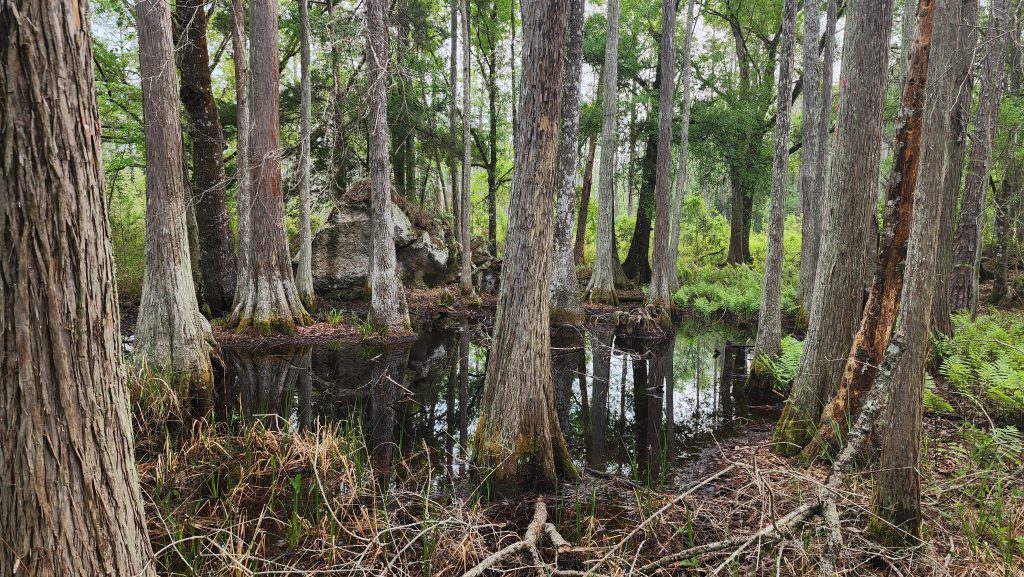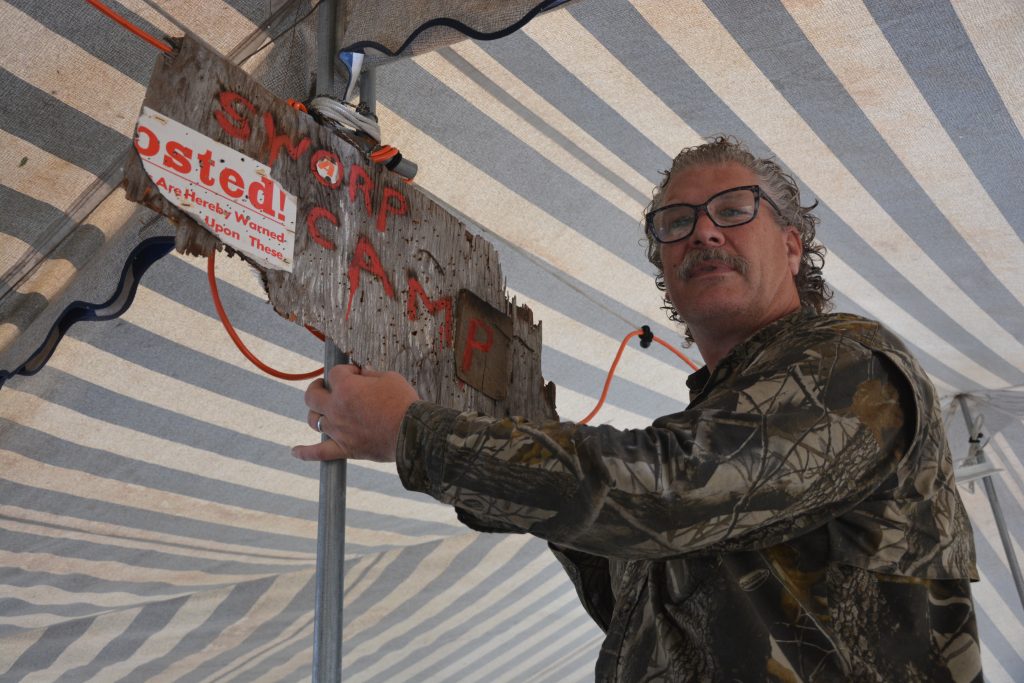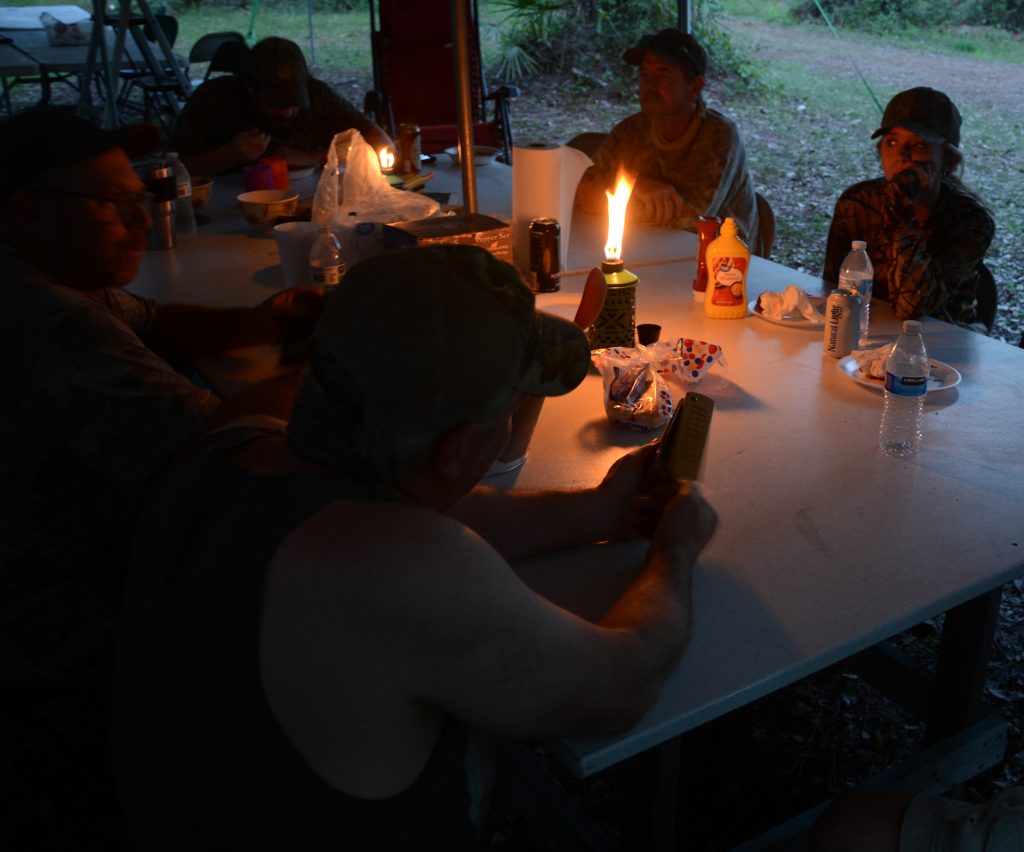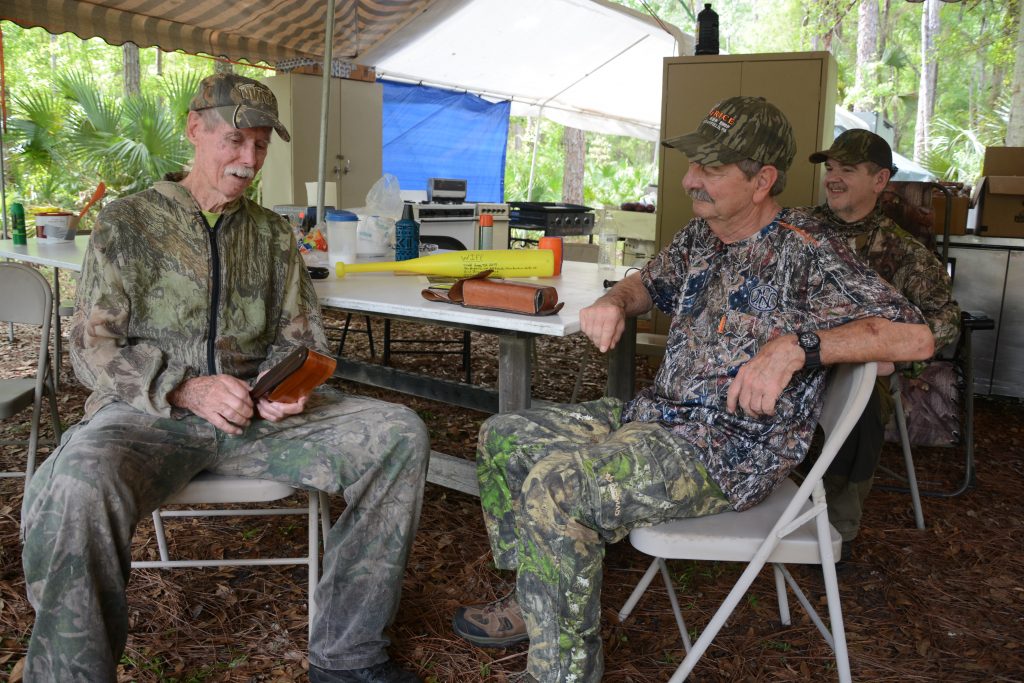Swamp Creatures
Sunshine State gobblers can be tough, especially if you’re hunting ground open to everyone. The author learned some valuable tips during his recent spring safari there.
“It’s the Wild West,” I was warned about public land turkey hunting in Florida, where residents ply their local opportunities and nonresident hunters converge to try to add the Osceola subspecies to their resume.
Public land hunting is nothing new for me. Hunting at Virginia’s Fort A.P. Hill (now Fort Walker) for 16 years revealed all the moods of a public lands experience, from managers trying to control pressure via quotas and access procedures to lines of hunters of all temperaments, egos and jealousies vying for a crack at a turkey.
“They’ll move in on birds you’re working and cut you off,” said Ken Greene, who has hunted public land near Lakeland, Florida, for decades, sometimes spending multiple weeks camped out in Green Swamp WMA, where free camping attracts budget-minded hunters.

Greene arrived early and scouted for two days, selecting a choice spot for opening day. After a few hours of sleep, we got there early, two-and-a-half hours before first light. A truck was parked right where we had planned to go. No matter. While driving around the previous day, we’d spotted a lone hen walking a dirt road, likely evading a gobbler she had spent the morning with and heading to her nest. I suggested we find a place near the location we spotted the hen. Fortunately, we were able to relocate a quarter-mile or more away. We left the truck, deployed mosquito repellent and listened. Owls — real ones, it appeared — made a racket. Sparse gobbles from three locations broke the daybreak silence.
The turkeys, however, didn’t want to play — at least, not with us. Not hearing any shotgun blasts, our best option was to stay put and stay quiet. We took turns at calling, sporadically and softly. Gobblers remember where they heard you calling and often come looking when hens they enjoyed in the morning sneak away to their nests.

Still, sitting for several hours is a challenge. Many turkey hunters like to run and gun, aggressively moving on birds, but that can be counterproductive, especially on crowded public land. Except for a brief, leg stretch reprieve around noon, we stayed tucked into the edge of a rare patch of relatively open ground dotted with oaks and cypress trees, adjacent to swampy sinkholes and palmetto thickets. Patience paid off. At 2 p.m., a couple of turkeys circled back. With just a couple of days available to hunt, I was graciously allowed first crack. As the big gobbler — a rare Florida 20-pounder — rushed in to beat up our decoy, I folded him with a load of Apex TSS from my Mossberg 940 Turkey Pro shotgun. The bird dropped without even a wing flap.
We checked the turkey at the wildlife management area, where I was “pinned” — that is, awarded a small Florida Wildlife Commission turkey hunter public land pin.
Greene was designated shooter on day two as we headed back to the same general area. Daybreak gobbles were sparse – once, precisely. Less than an hour later, a bird shock gobbled as a distant shotgun blast sounded. He was just a couple hundred yards away. Greene softly coaxed the bird with a scratch box call. We saw the turkey’s red head moving in and out of the vegetation, but Greene never got a satisfactory look. Uncertain if the bird was a jake, he passed on the shot.
Florida: Loads of Public Land
For many people traveling to hunt Florida, especially folks checking the Osceola box on the Grand Slam, using a guide and outfitter streamlines things. That route is often easy-peasy — and expensive, as single-bird packages cost about $3,500. Feeders on Florida private lands can congregate flocks, although hunters must stay at least 100 yards from them.
Florida has about 6 million acres of public land. Some WMAs are large, such as Everglades, Big Cypress tracts, Ocala and Osceola. Their various tracts each total several hundred square miles. Others, such as the Richloam WMA, managed in cooperation with the Florida Forest Service, and adjacent Green Swamp WMA, together total nearly 110,000 acres. Much of the public land is in the region of Florida classified as home range of the Osceola subspecies.
Quota systems help manage pressure during the first days of the season on many tracts, but when the quota period ends, hunters with appropriate permits can join the fun. Reportedly, like turkey seasons in many areas, hunting pressure often dwindles as the weeks wear on.
Hunters typically queue before daybreak at the entrance to popular permit-required hunting areas. Campers in Green Swamp, for example, get an edge by positioning their vehicles at the locked gate the evening before, ensuring they are in or near the pole position as the race to desired spots begins when the place opens at 5 a.m.
A Social Scene
Turkey hunting campers at the WMA often visit Bill George’s expansive site. George is a gregarious transplant who located to the Sunshine State decades ago. Individual hunters bring their own tents and campers, but George brings the social scene, setting up large canopies, and bringing in tables, cooking gear, a hot shower and more.
“The camp is open to just about anyone who wants to swing through,” George said. “We’ve had people watch us from afar wander over, and now they’re part of the crew, a bunch of turkey hunters getting together. We never know who’s going to show up from year to year.”
Setting up his site is a big effort, but George believes it’s worthwhile.
“Camp, whether deer, turkey or whatever, and the fellowship of hunters is critical to how our traditions continue,” he said. “Today, too often, people take a kid out, run them to the woods and immediately take them home. They don’t get that social interaction with others who hunt. Hearing stories of other hunters, especially experienced hunters, makes these young people think and inspires them to go out there.”
Tom “Doc” Weddle, an author with multiple 49-state slams under his belt, uses his camp as the operations base for his Florida guiding business. Some stay just a day or two, hunting adjacent private ranches. Others often stay for several days, enjoying the social scene as much as the hunting.

Charlie Parrish, now in his 80s, lives across the road from Green Swamp. Parrish, a local hunting and call-making legend, was a guide at the pioneering Fisheating Creek Hunting Camp the late Lovett Williams operated in Glades County, Florida. Parrish was known for crafting ornate box calls, wingbones, scratch boxes, trumpets and more.


“At first, we didn’t have this big camp,” he said. “You had your tent or slept in your truck. No showers, good food, anything like that. Some people would drive to town and get a motel room. But most people love it out here. It’s a nice place to be, congenial, with some of the best turkey hunters in the country. You make lifelong friends.”
Tough Hunting
Parrish gestured at the jungle just outside the campsite. “Look at these palmettos. Do you want to go in there or just go kill a turkey on a sod farm?”
“The swamp is not a friendly place, by no means prime turkey habitat,” George said. “It’s inhospitable. You may hear a bird gobbling in a certain direction, but there is often no way to get close to that bird short of working three-quarters of a mile around a big swamp. There are cottonmouths, and alligators. If you see lily pads, watch out. There’s an alligator that lives there year-round and has made a deep hole.”
Parrish said success hinges on anticipating what turkeys will do and understanding the terrain where they live. He pointed out that a hill in a swampy environment might be just 3 feet in elevation.
“It’s as flat as a pool table around here, but an elevation of 3, 4 or 5 feet makes a difference in the way the turkeys travel, where they’re going,” he said. “If you know the land, it makes a difference. If you’re set up in the wrong place terrain-wise, that turkey isn’t coming. I don’t care how good of a caller you are. And that applies anywhere you’re hunting, not just in the swamp.”
Parrish recalled a friend who always admonished, “Calling is all right, but patience kills more turkeys than anything else,” adding, “Most people don’t want to sit still for the hours it might take. If you know, though, that the turkey is coming and know the terrain, it makes the day go faster.”
“I can’t tell you how many times you have a bird inside of 30 yards and still can’t see it,” George said. “You know he’s right there. You can’t see him or just get a glimpse as he slips by. In here, everything wants to eat a turkey, so they’re not very vocal, not always gobbling. Many times, they come in silent, gobble once and then shut up.”
Consequently, when it comes to Florida public land, George tells people, “It’s almost more defense than it is offense. Just because you’re in tight on a bird, resist the temptation to try to make him gobble, because all that does is allow someone to come in and get between you and your bird and to shoot it right out from underneath you.”
Tips to Consider
- Bring a good flashlight, a compass and other means of orienting yourself. It’s easy to get lost. Seasonal weather affects water levels, making some hunt areas inaccessible. Water can be unexpectedly deep.
- Bring first-aid kits. Snake boots or chaps can’t hurt.
- Mosquitos and gnats are relentless. Treat clothes with a permethrin spray, and apply something with DEET to exposed skin. A ThermaCell helps.
- Learn the access nuances for your intended hunting area.
- An easy way to get license and permits is by visiting www.GoOutdoorsFlorida.com.
- If limited on time, consider hunting the middle of the week, avoiding weekend crowds. Access is usually easier, and turkeys will have had less opportunity to be spooked by a throng of people calling them and bumping them.
